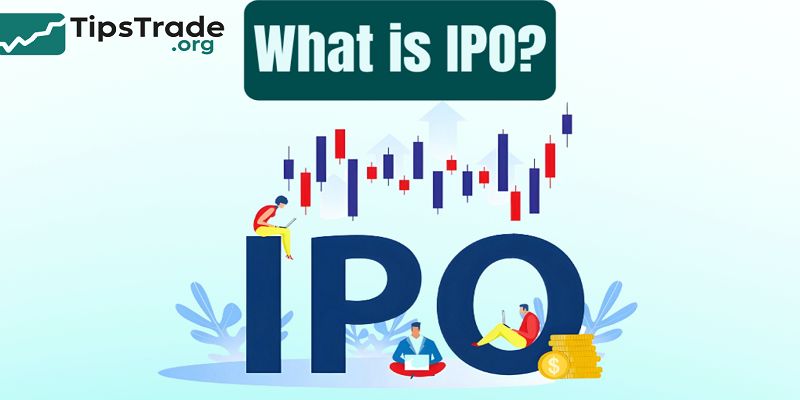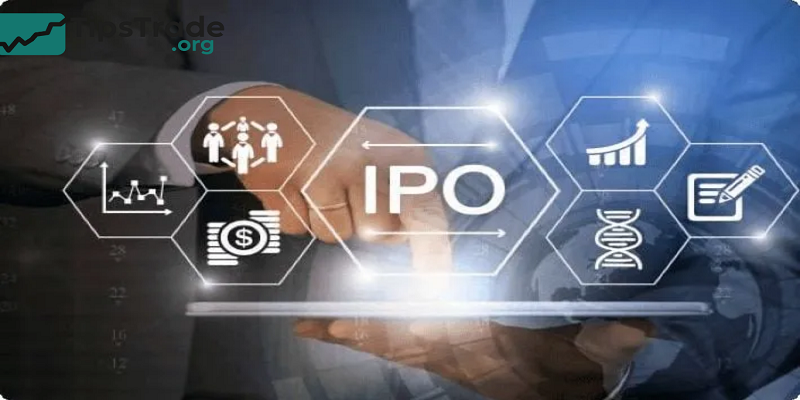What is IPO is the process by which a private company offers its shares to the public for the first time, transforming from a private entity to a publicly traded company. This initial public offering allows the company to raise significant capital for growth, expansion, debt repayment, or other strategic purposes. An IPO also provides early investors and founders an opportunity to realize returns on their investments by selling shares in the open marke
What is IPO?

- An IPO, or Initial Public Offering, is the process by which a private company offers its shares to the public for the first time by listing on a stock exchange.
- This event marks the transition from private to public ownership, commonly referred to as “going public.” Companies conduct IPOs to raise capital for growth, pay off debts, or fund other business needs.
- It also allows early investors and company founders to sell shares and realize returns on their investment.
- The IPO process typically involves hiring investment banks that help prepare financial disclosures, market the offering, set the share price, and sell shares to institutional and retail investors.
- After the IPO, the company’s shares trade freely on the open market.
- Overall, an IPO provides companies with access to public capital, increases visibility, and offers liquidity to shareholders, although it requires meeting regulatory requirements and ongoing disclosure obligations.
>>See more:
- ADR Stocks: A Complete Guide for Global Investors
- Growth Stocks – Definition, Examples, Characteristics
- Preferred Stock – What It Is, How It Works, and Should You Invest?
- Everything You Need to Know about Sustainable Stocks
What Does IPO Mean?
- The term IPO, short for Initial Public Offering, refers to the first time a private company sells its shares to the public through a stock exchange.
- It’s essentially the bridge that transforms a privately held company into a public one.
- When a company goes public, it offers ownership stakes to external investors in exchange for capital.
- The company’s stock becomes tradable on markets such as the New York Stock Exchange (NYSE) or Nasdaq.
- Before an IPO, ownership is limited to founders, employees, and early investors. After the IPO, anyone can buy or sell shares.
- The U.S. Securities and Exchange Commission (SEC) regulates this process to ensure transparency and protect investors.
In short, an IPO serves two main purposes:
- For companies: raise funds for growth and innovation.
- For investors: access early-stage public equity opportunities.
It’s a critical step that helps businesses scale and gives markets access to new investment options.
How Does an IPO Work?

An IPO involves a detailed process of preparation, approval, and execution. According to Nasdaq, the entire process can take six months to a year. Below is the general sequence:
- Preparation and Due Diligence: The company works with investment banks to assess readiness, financial statements, and valuation.
- Filing with the SEC: Companies submit a registration statement (Form S-1) detailing operations, risks, and financial performance.
- Pricing and Roadshow: Underwriters market the IPO to institutional investors to gauge demand and set a price range.
- Going Public: Shares are listed on the exchange, and trading begins.
- Post-IPO Period: Companies must report quarterly results and comply with stricter regulations.
For instance, Airbnb’s IPO in 2020 raised $3.5 billion, valuing the company at $47 billion. The stock price doubled on the first day — highlighting both the potential and volatility of IPO markets.
Why Do Companies Go Public?
Companies pursue IPOs for multiple strategic reasons, often related to funding and credibility.
- Raise Capital for Expansion: IPOs provide large-scale financing to invest in research, marketing, or international growth.
- Enhance Brand Visibility: Public listing boosts credibility with customers, suppliers, and investors.
- Create Liquidity for Early Investors: Founders and venture capitalists can partially cash out their holdings.
- Recruit and Retain Talent: Public companies can offer stock-based compensation to attract skilled employees.
However, going public also introduces challenges: increased scrutiny, higher compliance costs, and pressure from shareholders for quarterly results.
For example, Google’s 2004 IPO allowed it to fund its massive expansion into products like Gmail and YouTube, but it also meant transitioning into a highly regulated environment.
Benefits and Risks of IPOs
Benefits for Companies
- Access to Capital: Funds raised can support growth, acquisitions, or debt repayment.
- Enhanced Reputation: Being listed on a major exchange signals trust and stability.
- Market Valuation: Stock price becomes a real-time indicator of company performance.
Benefits for Investors
- Early Entry Opportunity: Investors can participate before the company matures.
- Potential for High Returns: Historical data from Bloomberg shows that some IPOs, such as Amazon (1997), grew over 1000x since listing.
Risks for Investors
- High Volatility: Prices often swing widely during the first months.
- Overvaluation: Hype may push prices above true value.
- Lock-up Periods: Insiders are restricted from selling shares for months after listing.
Balanced due diligence is essential before buying into any IPO.
How to Invest in an IPO as a Retail Investor

Investing in IPOs has become easier thanks to digital brokerages and fintech apps. However, it still requires caution and research.
Steps to Participate:
- Check Availability: Not all IPOs are open to retail investors. Confirm with your broker (e.g., Robinhood, Fidelity, Charles Schwab).
- Read the Prospectus: Review financial statements and risk disclosures in the SEC filing.
- Assess Valuation: Compare the company’s projected price-to-earnings (P/E) ratio with industry peers.
- Place Your Order: Submit an IPO application or wait until the stock starts trading publicly.
- Diversify: Avoid putting all your money into one IPO; treat it as a small portion of your portfolio.
Experienced traders often use technical analysis post-IPO to identify stable entry points once the hype cools down. Remember: discipline beats excitement.
IPO vs Direct Listing vs SPAC: What’s the Difference?
Companies today have more than one route to go public. Let’s compare the three main methods:
| Method | Description | Pros | Cons |
| IPO | Traditional offering with underwriters selling new shares. | Raises capital, increases visibility. | Expensive and time-consuming. |
| Direct Listing | Company lists existing shares without issuing new ones. | Lower fees, transparent pricing. | No new funds raised. |
| SPAC (Special Purpose Acquisition Company) | A shell company merges with a private firm to take it public. | Faster process, flexible terms. | Less transparency, higher risk. |
Spotify’s 2018 Direct Listing avoided underwriter fees, while DraftKings (2020) went public via SPAC for speed. Each method suits different company goals — IPOs remain the most regulated and trusted path.
Famous IPO Examples Around the World
- Facebook (2012): Raised $16 billion; early technical glitches didn’t stop long-term success.
- Alibaba (2014): Broke records with a $25 billion IPO on the NYSE — the largest in history at that time.
- Airbnb (2020): Valued at $47 billion; stock doubled on opening day, proving investor confidence in tech startups.
- VinFast (2023): Vietnamese EV maker listed on Nasdaq via SPAC, reaching a $23 billion valuation at debut.
These examples highlight how IPOs differ by industry, geography, and timing. Some deliver massive returns, while others underperform due to market conditions or valuation errors.
Conclusion
What is IPO marks a critical milestone in a company’s lifecycle, enabling access to public capital markets and greater liquidity for shareholders. While the process requires meeting regulatory requirements and entails costs, it opens up new avenues for raising funds and increasing a company’s visibility and credibility. The article above from Tipstrade.org has just provided you . We hope that you find it useful. Wishing you successful trading!
See more:

